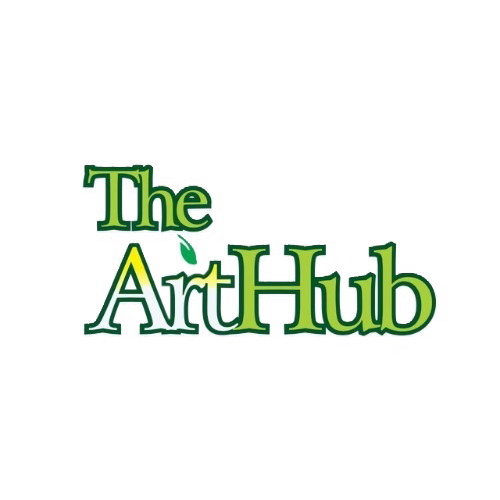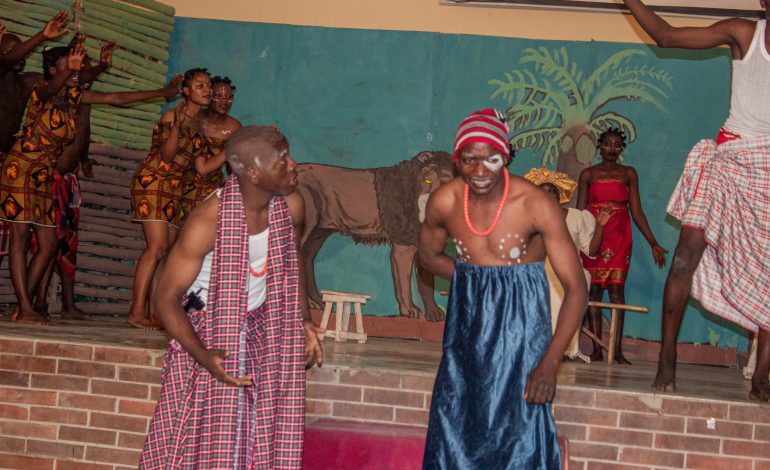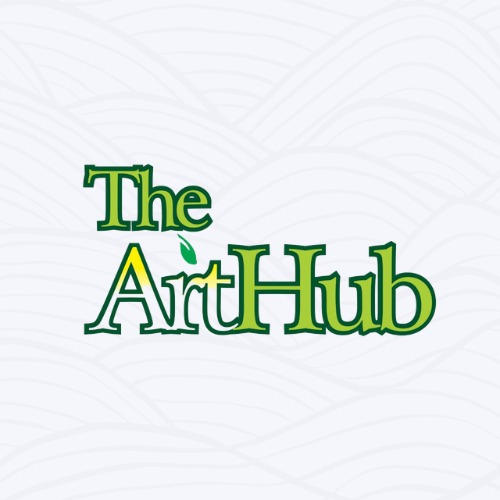African art is ahead of European art, it’s why the West draws from it, says Onobrakpeya
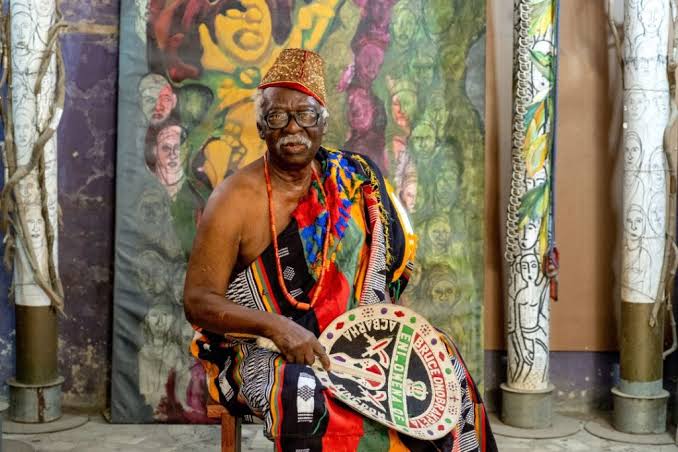
* ‘I hope some day the Harmattan Workshop in Agbarha-Otor becomes World Heritage Centre’
* ‘The person who will bring out the truth and expose my works better is probably yet to be born’
African art is ahead of European art, it’s why the West draws from it, says Onobrakpeya
The 26th Harmattan Workshop 2024 kicked off on Sunday, February 11, 2024 at Agbarha-Otor, Ughelli North LGA, Delta State. Last year the workshop theme was ‘Politics and Society’ , a theme in tandem with the general election year. Director of Harmattan Workshop Mr. Sam Ovraiti choose themes for the world famous workshops. This year the theme goes traditional – Folklores: Folk Art, Myths and Legends – concepts that are behind the art philosophy of the workshop founder and UNESCO ‘Living Human Treasure,’ Prof. Bruce Onobrakpeya. He found time to speak with ANOTE AJELUOROU last year at his Ovuomaroro Studio and home, Mushin, Lagos. The 91 years old artist is an enigma and moving encyclopedia of African art philosophy and thought. With this year’s workshop already in session till February 27, 2024, Onobrakpeya’s thoughts as expressed here will help new and old workshop enthusiasts alike to appreciate the thinking behind his art and why he established the workshop as an informal art education platform. Occasionally, his son and artist Dr. Mudiare Onobrakpeya, who facilitated the interview, would lend his thoughts to certain aspects to provide further illumination to the various subjects the grand artman expoused
The Harmattan Worshop theme last year was ‘Politics and Society’. This year it’s ‘Folklore: Folklores, Folk Art, Myths and Legends’. What’s the workshop process?
THE person who choose that theme is our director, Mr. Sam Ovraiti. He’s the director of Harmattan Workshop; he choose the theme, because the 2023 elections were coming and there were issues around it that needed to be discussed. What we did was to move up a little earlier and finish up before the elections came, because we didn’t know what would happen.
Yes, we usually have a speaker. Before every workshop, we choose somebody, a guest of the workshop year, who delivers what looks like a lecture on the theme. They just come and talk on the theme. The person who spoke last year was Prof. Frank Ugiomoh; he addressed the issue of politics and society.
We have a session where such guests address topics. But in the evenings from about 8pm, we also chose someone who throws up an issue and we all address ii, with everyone contributing. And others can be in the hall up till 12 midnight, sometimes 1am, to thrash out whatever other issues they need to discuss. Those discussions are pertinent to art and we find them very useful one way or the other, as they touch every aspect of our lives that can take us higher in society.
February is the main Harmattan Workshop. Now if we have money, as soon as we start in February, we can begin to have workshops every two weeks, like that throughout the year. But we’re handicapped with money. So the February Harmattan Workshop is usually one month. After that it’s the August Retreat which is for professionals, who go there to work undisturbed. But they still discuss issues about art and society. And they affect one another; one person may have a new idea he or she is working on and that may affect other people, and they may benefit from it. The one in August is more a working session, but not as buoyant as the one in February, where everybody – lecturers, people who didn’t do art in schools, art engineers and so on come in, spent two days, one week and experience what we are doing.
The thing to note about the Harmattan Workshop is that it’s an informal educational skill acquisition programme. It doesn’t do with syllabus. So people just go there, depending on our purse, and do their thing. Groups and organisations also bring their own people there and we share ideas with them and impact them with the logic of art. Some stay there for two weeks or more.
Mudiare Onobrakpeya’s intervention
The goal is to have activities all year round as a residency. It’s open, also in August, for observers. It’s a milieu and tilted towards professional people. However, people can self-direct, and it’s less facilitators-intensive. In fact, it’s open to observers like you. It’s the largest in Africa. The fact is that it holds all year round. You’re at the Harmattan Workshop, because you have come here at Ovuomaroro Studio at Mushin, Lagos to draw from the vast resource of the founder. Not only that, there’s hyper interaction, and it’s by virtue of that that you have a ferment of ideas.
Prof., you were brought up in the Christian way as well your roots in the African tradition. How do these two concepts interact in your art?
I have dual heritage because of our colonial background – we’ve had the British colonials rule us and they brought in their Christian religion. And there’s the Muslim influence, and of course the traditional idea which in itself is a religion. So the two religions – the traditional as well as the Christian religion that colonial masters brought affected me very much. Because I was born into Christianity but grew up with the traditional – the norms, the ways of doing things; they are there, although the Christian religion has very strong influence.
So in our lives (in Africa), we’re always comparing – this is the way we do it, here traditionally; and this is also the way we do it in a Western way. So sometimes we marry; sometimes, we tilt to one more. So that’s how we do it. There are concepts within the traditional way that are very important to me as an artist, and the British teaching the Bible have something for me. Both the Western – the colonial input and our own input, traditional – have a lot of similarities between them. There’re a few conflicts, but either we marry or take one that we consider to be superior to the other. So that is the dual heritage although most Nigerians have triple heritage, because we have been able to live together – Muslims, Christians and traditionalists. Some even practice the three of them. But for me it’s the dual heritage – the British colonial and the traditional heritage.
Is that why you did a series called ‘The Awakening, the Urhobo version of the creation story?
Well, that work must been a series like you mentioned, but what often happens with my works which I usually title in Urhobo is that curators can give their own interpretations of the works to suit their curatorial sensibilities or bias that may not necessarily be mine. Works are often renamed. I title my works in Urhobo, and that’s usually difficult for many people. So they now try to interpret them their own way, and that brings that kind of confusion, but it’s a beautiful confusion. I’m hoping that the person who will bring out the truth and expose my works better is probably yet to be born!
So let me put as it appears in the Urhobo language rather than try to interpret it, because I may miss something about it. The Urhobo language is a minority language in Nigeria. And so we’re doing everything we can to promote it, and that’s why those words drop in. It’s part of using the Urhobo language as a developmental process, to draw attention to that language, for people to use it, to understand it and to relate to it. There’s someone from America doing a doctoral research on me and he has to go to Urhobo land to learn a bit of Urhobo culture and language as well before they could give him a PhD degree. So that’s an impetus for me also, to make sure that the Urhobo that features in my art works is taught to a lot of people.
Mudiare Onobrakpeya’s intervention
This researcher is not an Urhobo, but of course, if you devote your life studying Latin, you’re a Latin scholar. So this guy spent some time and he was tutored by one of our very best Babatunde Lawal, one of the foremost Urhobo scholars. There’s a guy called John Pikton, the biggest Urhobo scholar in the world – he’s white American. Baba is very understated and modest; so anything he tells you, multiply it by 10, then you get the true picture. Baba is a proficient user of our indigenous language or mother tongue – derogatorily referred to as vernacular – in communicating the African paradigm. Just as he’s conversant with Urhobo, so also is he with Edo; he also uses Hausa. He has also used adire from Yorubaland, South West, depending on where the idea is communicated strongest.
So, he’s a truly liberated Nigeria or African. And it’s not just Urhobo. I’m taking time to explain this because the West is too quick to pigeonhole him as an Urhobo artist. He’s an African artist. In fact, he’s struggling to debunk such pigeon-holing. What is important is that history will place him as an important educator, no, teacher. Teacher communicates the energy of an artist, a community person and the energy of a philosopher.
Prof., you’ve involved in art all over the world, and there has been changes over the years. Which of these have impacted your work the most?
Usually, I leave that type of question. But yes, something impacted me in this journey. What impacted me most was the Osogbo Workshop, the Mbari Workshop also in Osogbo and the Ori Olokun in Ile-Ife and the one in Ibadan, the Mbari. Those workshops situation impacted me greatly. The workshop extends the idea of art beyond just the schools. The workshop also gets into the rural areas to know what is happening. What is happening now in our country is that people and ideas are moving from the rural areas and going to the townships. But the idea of the workshop, started by Ulli Beier in Osogbo, brings the art from the townships to the rural areas. And that’s one change that I find very important, because it brings with it a lot of things. Osogbo is World Heritage Centre, not just because it has beautiful hills and waterfalls, but because the art practised by Duro Ladipo, the art, studies and photography of Ulli Beier, all that out together made it possible for Osogbo to be made World Heritage Centre. That idea I found it to be profound. It’s what made me to establish the Harmattan Workshop in Agbarha-Otor. And I hope some day that Agbarha-Otor becomes World Heritage Centre!

UNESCO Living Human Treasure, Prof. Bruce Onobrakpeya
What’s the philosophy that guides your work as an artist?
First, my art talks about life itself, just life; it doesn’t go beyond that. Life either as it’s lived here (akpo) or as conceived to be at the other side (eriwi) – the two making akpo avo eriwi – the imaginary side, the other side and here. What happens on the other side? If you don’t know, you imagine. A variety of things. With that kind of mindset, I’m intrigued by the folktales, I’m intrigued by the mythologies; I’m intrigued by history, intrigued by plants, by animals; I’m intrigued with human beings – their ideas, their reactions. I’m intrigued with people – what makes them happy, and sometimes what makes them sad? And then what is it that is making the country not the ideal place to live in, that makes people want to leave? These are the questions that I think about.
In actual fact, my art touches every aspect of life, and is motivated by the things around me – the things that we see, things that I’ve enjoyed, the things that make us laugh, things that make us cry; things that give us wisdom; things that are beyond our comprehension here – and to comprehend, either we now imagine that they are going to come to pass or that they have come to pass. These are the major inspiration behind my work.
Which is your favourite medium to work in?
Art is broken into different categories, but art is all one. There’s no way you can really say you’re interested in this and the other aspects are wrung out of it. I studied painting in Zaria (Ahmadu Bello University) and became very much interested in printmaking. Painting is about colours and printmaking is about lines and colours. But later I discovered that the art I was doing covered painting, it covered sculpture, it covered lines, it covered everything. Would I now say that it’s print that is best for me? Then I’m pushing away the effects of colours, the effects of sculpture there. So it’s safe for me to say that all versions of art are one and the same thing. Just that one aspect may be emphasised at a particular time or the other. So no need to say that my favourite is printmaking, ceramics, painting and so on.
For young artists coming up, what advice do you have for them?
Everyone is involved in art, everyone; just that as we grow older, we leave some aspects of it behind. So I tell young ones: enjoy art; enjoy touching objects, enjoy putting objects together. The stories you hear, put them down, not only in words, in writing but also in visuals. And then train either in school or as an apprentice. Train. Train. Yes, we know art can happen without training, but the best thing is to get trained. And then after training, put yourselves into groups, like a group of friends; discuss ideas and work with those ideas, so that when eventually you create, maybe individually, separately, when they mention the name of one person, the names of the other persons appear as well. It has always happened with the so-called Zaria Rebels. When you mention the name of Demas Nwoko, Uche Okeke’s name comes out, Yusuf Grillo comes out, my name comes out, Etiada comes out. So work together as a group, exhibit together as a group; that way you grow together, because when they mention the name of one person, the names of the others automatically come out.
As practicing artists, you should have mentors and patrons, people who have money, have knowledge and are able to direct and help you. Once you have such people, hold them tight. And for the young people, apart from having gone to school, apart from practising and having mentors or patrons, they should also attend workshops, attend lectures on art, visit art exhibitions and also use their imagination to bring out what is contemporary to them. Myself, Wole Soyinka and Jimi Solanke (now late), our art is from pre-independence times; that’s our generation. Other generations are coming. A young artist should be able to identify the age he is to bring out the best in him.
Now we’re talking about GenZs. You know what that connotes. That immediately makes some of us illiterate. I can’t compete with them in the use of the computer and other modern gadgets. Libraries are closing down; the British Library is no more, because they have found a way for people to carry library with them – a whole Bible is now in a toy, so to say. Knowledge is now compressed; you can refer to it; that was impossible in our own time.
Mudiare Onobrakpeya’s intervention
Baba calls himself a post-independent artist or independent, emergent artist, which is valid; that’s the curator in him. But a philosopher Uche Okeke classifies their generation as the Bridge Artists – artists who brought the strength of the old with the new. That’s so audacious. Baba sees himself as the firstborn of Nigeria. All these questions are at the superficial stage of being interrogated, so that different notions can be brought out; I encourage everyone to come to the workshop. I tell people that Baba is a modern artist, more modern than I’m. He connects better with my son and his generation. Some people say he’s an Urhoboist, a shrine-driven artist. He’s not a shrine artist, but a post-modern artist who does his installations that are devoid of any spirit entities and have been, according to Baba, sanctified and demystified. That qualifies him as a modern artist. I encourage you to film the shrine here.
Prof., when Uche Okeke says your generation is the bridge, I’d say you’re the firstborn of the ancestors. When you look at the works of our ancestors in various world museums, I ask younger artist how much of the accomplishments of our ancestral art is in what they currently or whether it comes any close to what our ancestors did? Why the gap?
Fuentes, a Mexican philosopher, asked us to go back in time. The art that we do we now draws from the background of what our ancestors did before now. In other words, with the philosophy of the Ziaria Art Society, we are able to relate that background, bring it to the present, add something that’s happening now to make it richer and possibly relive it.
Yes, what we do now comes close to what our ancestors did; they do. When our ancestors did the carvings, they were trying to bring out the spirit of the deity or the hero in the carvings. They were trying to conjure the spirit of the god that they were talking about and then put it, plant it in the masks, and as they were working, they were thinking about that spirit or the idea of that spirit. By the time they finished, some resemblance of the idea would come out; sometimes, it would not even come out, but the spirit of that idea is there in the mask, and that mask, when won by someone, actually now carries the spirit of that thing that is actually talked about. And that’s why sometimes, when the spirits are performing, some of them are very dangerous, because of the concept that has been faithfully transferred into them.
So in the present day, the art we create still does it otherwise it’s no art at all. The artist draws something from the subconscious; he thinks about it, he experiences an idea, a thought comes to him, and then he wants to put it out. Sometimes, it’s impossible to put it down. But he sleeps over it and then eventually that idea comes out and he puts it down, either as carving or drawing. It’s that spirit that is transferred into that art that you see and like or hate about that art work.
European art has a lot of philosophical demarcations – cubism, structuralism, surrealism, realism, modernism, post-modernism, etc. What are the demarcation that you find in Africana art that can be explored, if any?
I tell people that my art move seamlessly from the traditional to modern, because traditional art is ahead of so-called modern art. The traditional is ahead, because the West draws from the traditional art. Picasso studied African art and derived cubism from it. Cubism came from African art, because it was when Picasso saw the way our people drew forms from what looked like ‘Q’ to arrive at cubism. So our art is ahead of European art, because they copied from the way our people created art. We have been using stylisation, we’ve been using cubism, and we’ve been using surrealism – when art is dream-like, makes you think of the dream world, the spirit world, eriwi. That’s surrealism. We’ve been there, just that nobody talked about it – writers, philosophers, have not drawn attention to these. We’ve been there before the West. So you see that we’re ahead, and what they do is to take an aspect of African traditional art and elaborate on it and give it a name. But we have been ahead of European art.
I told people in Atlanta, in the U.S. that I move seamlessly from traditional art to modern art, because the traditional art is ahead of modern art, the Western, modern art. They learnt from African art. The West study African art, people like Frobenus and the others didn’t go around digging archeological sites on holidays; they studied Igbo-Uku, Ife art and the rest. So the West labelling African art primitive is because we have been dumb; we were colonised, don’t forget. So they labelled us whichever way they liked that also served the interest of promoting their own art over and above ours.
What I’m saying now is that we should wake up and study our environment and talk about it. When we talk about it, there’s no way someone else can come and label you other than how you label or describe yourself.
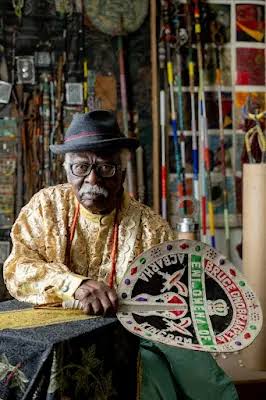
Prof. Bruce Onobrakpeya
That means there is a clear lack of theorisation of African art by African scholars. Whose job is it to remedy that?
Oh yes, that’s the problem. All these things, we have practised them – realism, cubism, surrealism. Look at Ife art, it’s only comparable with the Greek art and the realism of Michael Angelo, we had long attained that in Africa. Perfect realism, we attained it in Ife art works; and then abstraction, we also attained; semi-abstraction, we attained. We have all these things; but the West won’t talk about it, because it means that African art is better than their own. No, the West won’t say it. It pays them to put their art above our own African art. And that’s why it took a long time for my Stations of the Cross to get to the West; it took 45 years after the work was done and until a black curator saw it and showed it in Atlanta, no Westerner took notice of it.
We need our people to write and counter-write what the Europeans have written wrongly about us and our art. Telling the truth is what our own writers, our art historians can do for us. We were there; Africa had been there, but Europeans write the textbooks but marked us down. Our own people who are going to write will now do what is called the ‘Anthropology of the Anthropologists’; that means our people, our writers have to look into what the West has written about us, dust them up, clean them up by saying: ‘oh, this wasn’t correct or this was correct’ and write the proper history. It’s taking place all over colonised places; people are rewriting what Europeans wrote wrongly. They call that system the anthropology of the anthropologists – rewriting what Europeans have wrongly written about us.
So there’s a generational gap, and you’re a bridge between ancestral art and modern art and you also have a dual heritage of traditional and western art. But there’s an alienation of the current generation of artists, who only know the Christian tradition and not much about their African traditional art heritage – what a shrine looks like, for instance, because it has been demonised. What can be done to bridge this gap?
Well, I take consolation in the fact that things are changing. When I started this place, when young people come here and they see the shrine and do this (sign of the cross). And then at the Hamarttan Workshop, we have the traditional museum and school children from around Agbarha-Otor all come in droves, and we talk to them. So there’s a kind of education to bring back the consciousness of our art to young people. And you think that these young people don’t know; they know a lot. And that kind of fear and notion that traditional art is fetish is going away, because of our own work that is liberating and showing freedom.
